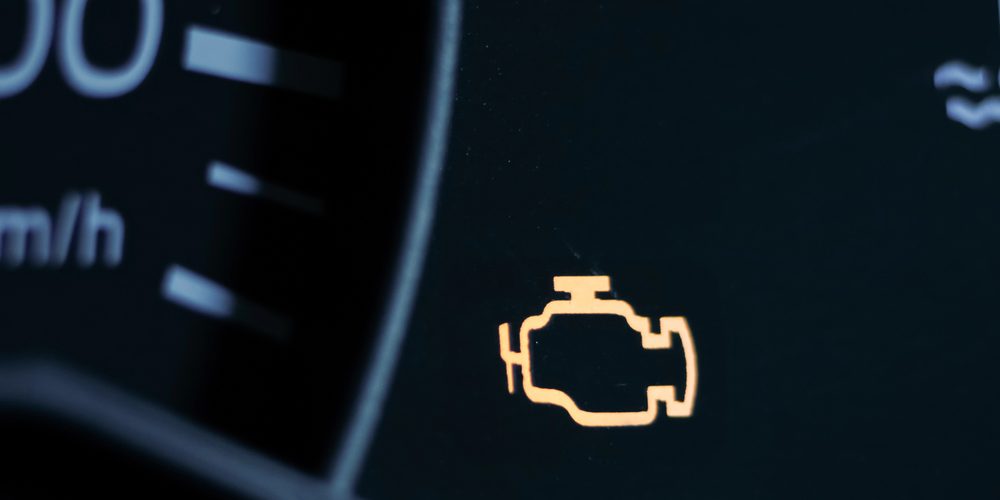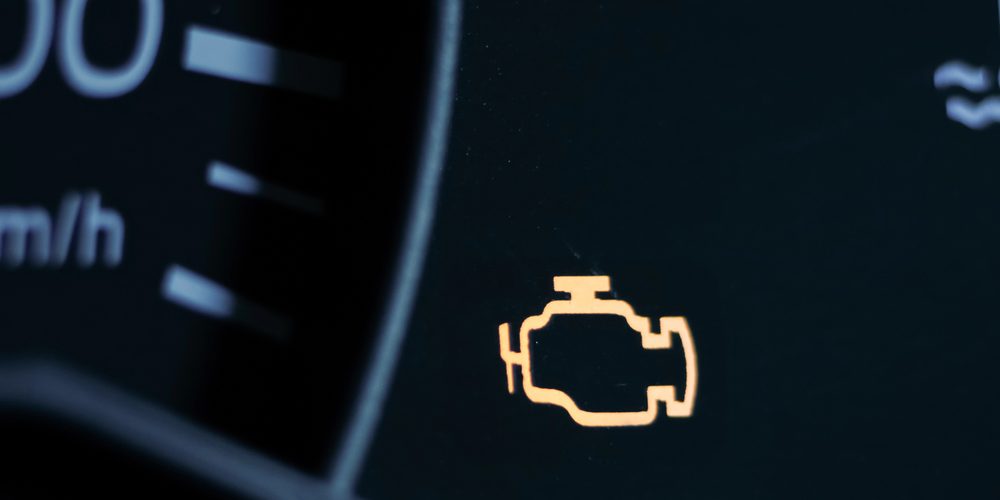What Happens If You Ignore a Check Engine Light? Key Risks Explained


Ignoring a check engine light might feel harmless if the car still runs smoothly, but the warning signals more than a minor inconvenience. Driving with that light on can lead to higher repair costs, reduced fuel efficiency, and potential engine damage. The light exists to alert drivers to issues ranging from loose gas caps to failing sensors or serious mechanical problems.
When the light turns on, the vehicle’s system has already detected something outside normal operating conditions. Some issues cause immediate risks, like increased emissions or stalling, while others quietly wear down components over time. Delaying repairs often turns a small problem into a larger one.
By understanding what triggers the light and what happens if it’s ignored, drivers can make informed decisions that protect both their vehicles and their wallets. This article looks at the short-term risks, common causes, and long-term consequences of leaving the check engine light unresolved.
Immediate Risks of Ignoring a Check Engine Light
A lit check engine light signals that the vehicle’s systems have detected a fault. Ignoring it can quickly escalate into mechanical damage, wasted fuel, and higher emissions that affect both performance and compliance with regulations.
Potential for Engine Damage
The most direct risk of ignoring a check engine light is hidden engine damage. A small issue such as a misfiring cylinder or faulty sensor can create stress on other components. Left unresolved, these stresses can lead to overheating, loss of power, or even a complete breakdown.
Critical parts like the catalytic converter or oxygen sensors often fail when problems remain unaddressed. These parts are expensive to replace, and their failure can trigger secondary issues. For example, an overheated catalytic converter can damage nearby wiring or exhaust components.
A flashing check engine light usually indicates severe misfiring that could destroy the catalytic converter within minutes. Continuing to drive under these conditions risks permanent engine damage and leaves the driver stranded without warning.
Reduced Fuel Efficiency
A check engine light often points to problems that directly affect fuel efficiency. Faulty oxygen sensors, clogged fuel injectors, or misfiring spark plugs can cause the engine to burn more fuel than necessary. This leads to higher costs at the pump and reduces the vehicle’s range.
Inconsistent air-fuel ratios also place additional strain on the engine. The system compensates by injecting more fuel, which lowers efficiency and increases wear on combustion components. Over time, this can shorten the lifespan of the engine and related systems.
Drivers ignoring the warning may notice they need to refuel more often, even under normal driving conditions. What begins as a small drop in miles per gallon can become a long-term expense that outweighs the cost of early repairs.
Increased Emissions
The emissions system is closely tied to the check engine light. Problems such as a failing catalytic converter, malfunctioning mass airflow sensor, or defective gas cap can increase the release of pollutants. These issues often go unnoticed until emissions testing reveals a failure.
Excess emissions contribute to air pollution and can cause the vehicle to violate local environmental standards. In many regions, unresolved check engine light problems prevent registration renewal until repairs are complete.
Beyond compliance, higher emissions also signal that the engine is running inefficiently. A poorly controlled combustion process produces more hydrocarbons, carbon monoxide, and nitrogen oxides, which damage both air quality and long-term engine health.
Common Causes Behind the Check Engine Light
A check engine light often points to problems with components that affect fuel delivery, emissions, or engine performance. Some issues are simple to correct, while others can lead to costly repairs if ignored.
Loose Gas Cap Issues
A loose or damaged gas cap is one of the simplest causes of a check engine light. The cap seals the fuel system and prevents gasoline vapors from escaping. If it is cracked, missing, or not tightened properly, the system detects a leak and triggers the warning.
Drivers sometimes overlook this issue because the car still runs normally. Yet, it can reduce fuel efficiency and increase evaporative emissions. Checking the cap for cracks and ensuring it clicks tightly after fueling often resolves the problem.
If tightening does not help, replacing the cap with a compatible part is usually inexpensive and quick. Ignoring the issue can lead to unnecessary diagnostic costs or failed emissions testing.
Faulty Oxygen Sensor
The oxygen sensor monitors the oxygen level in exhaust gases. This information helps the engine control unit adjust the air-fuel ratio for efficient combustion. A failing sensor can cause poor fuel economy, rough idling, or higher emissions.
When the sensor stops working correctly, the engine may run too rich or too lean. Both conditions can damage other parts, such as the catalytic converter, if not addressed.
Replacement is the only solution for a faulty sensor. While the part itself is not the most expensive, delaying repair can multiply costs by harming downstream components.
Spark Plug Problems
Spark plugs ignite the fuel-air mixture inside the engine. Worn or fouled plugs can cause misfires, reduced power, and rough engine operation. Ignition coils connected to the plugs can also fail, compounding the issue.
A misfire that continues unchecked may damage the catalytic converter by sending unburned fuel into the exhaust. This can turn a relatively inexpensive spark plug replacement into a much larger repair.
Regular maintenance schedules typically recommend spark plug changes at set mileage intervals. Replacing them on time helps avoid performance loss and prevents the check engine light from recurring for this reason.
Mass Airflow Sensor Failure
The mass airflow (MAF) sensor measures how much air enters the engine. This data allows the computer to balance fuel delivery. If the MAF sensor fails, the engine may hesitate, stall, or consume more fuel than normal.
A faulty MAF sensor can also cause difficulty starting the vehicle or trigger rough acceleration. Because the sensor plays a key role in combustion, its failure affects both performance and emissions.
Cleaning the sensor sometimes restores function if dirt is the cause. If the sensor itself is defective, replacement is required. Ignoring the warning can lead to poor drivability and further mechanical strain.
Long-Term Consequences of Delaying Repairs
Ignoring a check engine light can lead to expensive component failures, higher repair bills, and reduced dependability of the vehicle. Problems that start small often grow into conditions that affect safety, performance, and long-term operating costs.
Catalytic Converter Damage
The catalytic converter is one of the most expensive parts in a vehicle’s exhaust system. When the engine runs with unresolved issues, fuel may burn improperly, sending excess hydrocarbons into the exhaust. This overloads the converter and causes it to overheat or clog.
A failing converter reduces fuel efficiency and increases emissions. Drivers often notice sluggish acceleration, poor engine performance, or a sulfur-like odor. Replacing this component can cost thousands of dollars, far more than repairing the original issue that triggered the check engine light.
Leaving the problem unaddressed can also cause the vehicle to fail emissions testing. In many regions, this prevents the car from being legally registered until repairs are completed.
Escalating Repair Costs
Minor issues such as a faulty oxygen sensor or loose gas cap are inexpensive to fix. When ignored, these problems can damage larger systems like the catalytic converter, spark plugs, or engine valves. The longer repairs are delayed, the more parts are affected, raising costs significantly.
For example, a $200 sensor replacement can turn into a $1,500–$2,000 repair if the converter fails. In some cases, extended neglect can even cause engine misfires that require major internal work.
Owners often assume the car is safe to drive when no immediate symptoms are noticeable. In reality, the hidden damage accumulates, leading to higher labor and parts expenses down the line.
Impact on Vehicle Reliability
A check engine light left unresolved makes the vehicle less reliable over time. Engine misfires, stalling, or poor fuel economy can develop gradually, leaving drivers stranded or unable to trust their car for longer trips.
Reduced reliability also affects resale value. Buyers and dealers often lower offers when service records show neglected maintenance or unresolved warning lights.
In addition, fuel efficiency declines as sensors and engine components fail to operate correctly. This means higher fuel costs and more frequent stops at the pump, adding ongoing expense beyond the repair bill itself.
If you enjoyed this article, be sure to follow us on Microsoft Start.
Check Engine Light FAQs
How long can I ignore a check engine light?
Do not leave a check engine light unresolved for more than a few days without at least reading the code. A minor fault such as a loose or cracked gas cap will not strand you, but it still hurts fuel economy and emissions. Other faults, like a misfire or a failing catalytic converter, can escalate quickly into four-figure repairs. Treat a flashing light as an immediate stop, since it signals active misfire that can overheat and melt the catalyst. The smart approach is simple: tighten or replace the gas cap, scan the codes with an OBD-II reader, and book a diagnosis if the light stays on. Waiting weeks turns easy fixes into expensive ones and also masks new problems, since you will not notice a second fault while the light is already on.
Is it fine to drive with a check engine light on?
Sometimes, for short trips, if the light is solid and the car drives normally, you can drive to a shop or home while planning a diagnosis. Reduce load, avoid towing, and keep speeds moderate. If the light is flashing, the engine is misfiring and unburned fuel is reaching the catalytic converter, which can cause severe damage within minutes. New noises, rough running, power loss, or fuel smells also mean you should stop and arrange a tow. When in doubt, read the codes first. Even a basic reader will tell you whether you are dealing with an emissions leak, an oxygen sensor fault, or something that can harm the engine.
What happens if you don’t fix a check engine light?
Leaving the light on lets the underlying fault keep working against the car. A small evap leak wastes fuel vapors, a weak oxygen sensor forces rich mixtures that foul the catalyst, and misfires wash down cylinder walls and damage spark plugs and coils. Fuel economy drops, emissions rise, and the catalytic converter can fail, which is one of the costliest exhaust parts to replace. You also lose the early-warning benefit of the system, since new faults may not be obvious while the light is already illuminated. Fixing the root cause early protects the engine and keeps repair costs under control.
Can a check engine light go away by itself?
Yes, if the fault was temporary. The engine computer clears the light after a set number of drive cycles when the condition no longer appears. This often happens after tightening a loose gas cap or after a one-off sensor glitch during a cold start. If the light goes off but returns within a few trips, the fault is still present. You can confirm by scanning for stored or pending codes, which remain available even after the light turns off. A self-cleared light is not a guarantee that everything is fine, it only means the monitored condition has not reappeared long enough to keep the light on.
Is a solid check engine light serious?
A solid light means the computer found a confirmed fault that affects emissions or performance, but it is not an emergency in most cases. Typical causes include a small evap leak, an oxygen sensor fault, a mass airflow issue, or an EGR problem. You may notice poor fuel economy, a rough idle, or weak acceleration, yet the car will usually drive. Plan a diagnosis soon and avoid hard acceleration until you know the cause. If the light is solid and the car also runs poorly, cut the trip short and have it checked to prevent secondary damage.
How far to drive to clear a check engine light?
If the fault has been fixed, most vehicles need 50 to 100 miles of mixed driving to complete the readiness monitors and turn the light off or mark the system as ready for inspection. The key is variety: several cold starts, steady highway cruising, gentle acceleration, and time at idle. Some makes require a specific “drive cycle” that includes set speeds and time windows. Simply driving without addressing the fault will not clear the light, and erasing codes with a scanner resets monitors, which can cause an emissions test failure until enough drive data is collected again.
Why is my check engine light on but my car runs fine?
Many faults affect emissions long before drivability, so the car can feel normal while the computer sees something out of range. Common examples are a loose gas cap, a small evap leak, a tired oxygen sensor, or a catalytic converter efficiency code. These issues raise emissions and often reduce fuel economy even if you do not feel it. Read the code, fix the simple items first, and monitor fuel use. Ignoring a smooth-running car with the light on can still lead to costly parts later, since rich operation shortens catalyst life.
Is a check engine light expensive to fix?
Costs vary by fault and brand. A new gas cap is often under 50 dollars. Many oxygen sensors land in the 200 to 500 dollar range with parts and labor. Coil packs and ignition components can run from 150 to 600 dollars per cylinder depending on layout. Catalytic converters can exceed 1,000 dollars and may run several thousand on some models. A scan and smoke test for evap leaks usually costs far less than guessing, and it prevents replacing good parts. Quick code reading and a proper diagnosis are the best way to control the bill.
What is the most common cause of the check engine light?
A loose or faulty gas cap is the top culprit, since it triggers evap leak codes that the computer flags quickly. Close behind are oxygen sensor faults, mass airflow sensor issues, and misfires from worn plugs or coils. These problems are frequent because they involve parts that age with heat and vibration. Start with the easy checks: tighten or replace the gas cap, verify that vacuum hoses are intact, and confirm maintenance items like spark plugs are current. Then scan for codes to target the exact system at fault.
Can an engine light be nothing?
The light always means the computer saw a condition outside its expected range, so it is never “nothing,” even if the cause is minor. The trigger could be a brief voltage dip from a weak battery, moisture in a connector, or a gas cap that did not seal on the first attempt. If the car drives normally, you can scan codes and clear them once, then watch for a return. If the light comes back, there is a real fault that needs attention.
Can a check engine light come on falsely?
Yes, false triggers happen when sensors momentarily lose signal, when battery voltage drops, or when a connector is loose. After a jump start or a battery change, the system may set codes that do not reflect a lasting fault. Clear the codes and complete a few drive cycles. If the light returns with the same code, treat it as a genuine issue. Checking battery health, grounds, and connector fit often resolves intermittent warnings without replacing parts that are still good.










